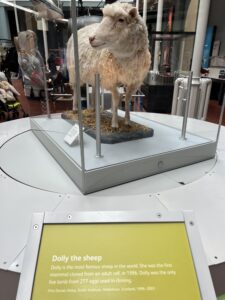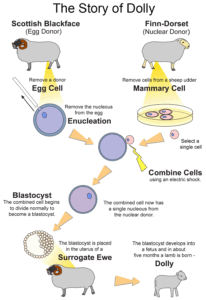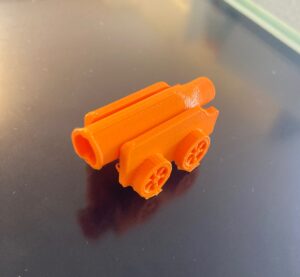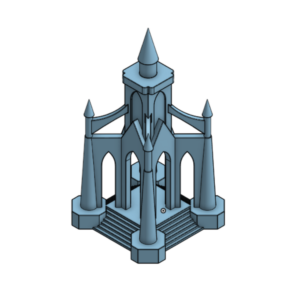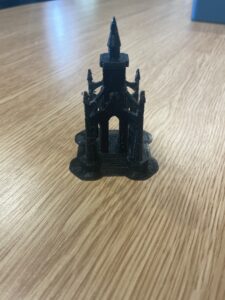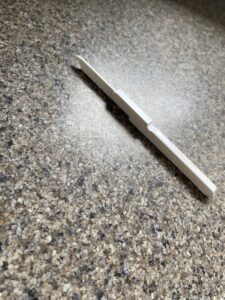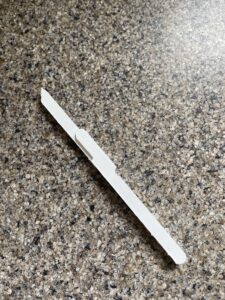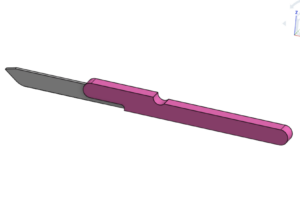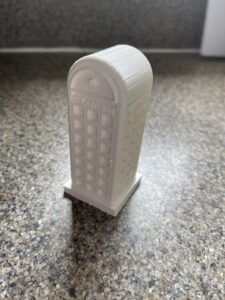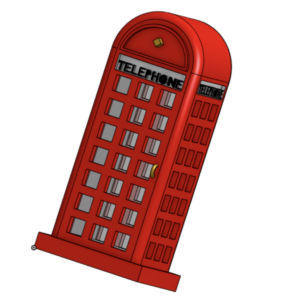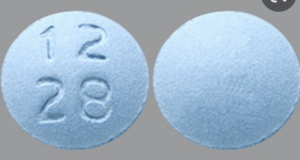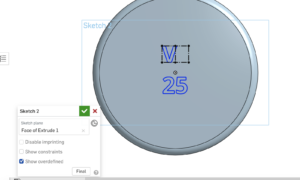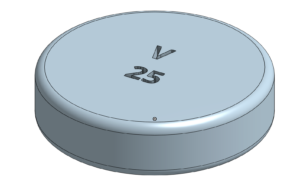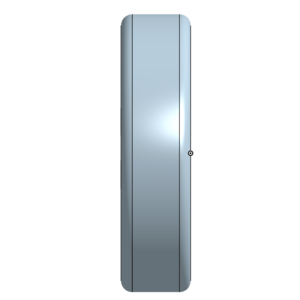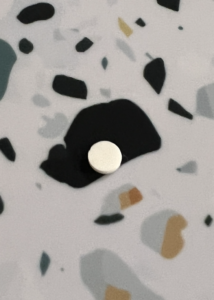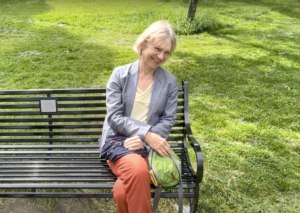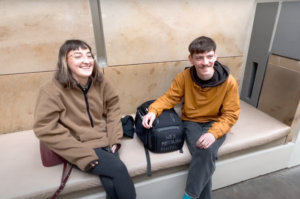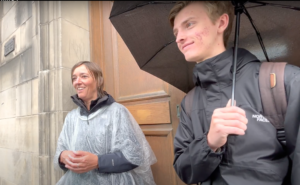Dolly the sheep was the first mammal to be cloned using biomedical engineering from an adult cell. This experiment took place at the Roslin Institute, at The University of Edinburgh. Professor Sir Ian Wilmut led the research team to clone a cell from a Finn Dorset Sheep, which proved to be successful when Dolly did not share the black markings that her surrogate mother had.
This experiment created a multitude of possibilities within biology, while also raising several questions concerned with the ethics of cloning (Roslin Institute, n.d.).
Dolly was cloned using the Somatic Cell Nuclear Transfer, or SCNT. For this, the nucleus of a somatic, body cell is transferred into the cytoplasm of an egg cell that has its nucleus removed. The nucleus from the somatic cell replaces the original nucleus from the egg cell to become a zygote (fertilized egg). With this method, extinct species could be resurrected, such as the wooly mammoth with an elephant surrogate (Stocum & Rogers, 2009).
Dolly died in 2003, but she is now located in the National Museum of Scotland in Edinburgh.
The Life of Dolly. (n.d.). Dolly the Sheep. Retrieved July 6, 2022, from https://dolly.roslin.ed.ac.uk/facts/the-life-of-dolly/index.html
Stocum, D., & Rogers, K. (2009). somatic cell nuclear transfer | Definition, Steps, Applications, & Facts. Encyclopedia Britannica. Retrieved July 6, 2022, from https://www.britannica.com/science/somatic-cell-nuclear-transfer
